2022 The Best Paint Roller & Techniques & Roller Painting Tips
Since 2000, a lot of home research Institutions have surveyed, researched and produced an annual report to better understand home improvement trends and behavior among People in European and American countries. This year, a home research Institution report focuses on homeowner attitudes and behavior towards renovations completed since the beginning of the Covid-19 pandemic. They findings are fascinating and are contrary to many popular opinions released earlier in the year.
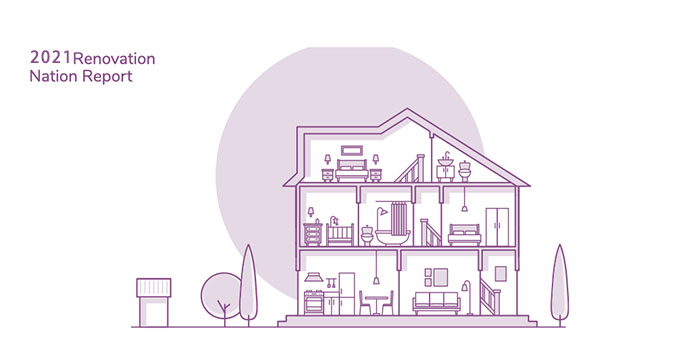
Top Findings from 2021 Home Renovation Report
At the start of 2021, it was a common assumption that the pandemic would heavily influence the way people invest in their homes. Many believed that homeowners were renovating in order to expand or adapt their homes for better work, education or enjoyment spaces. Interestingly, according to our survey, only 28% of homeowners were motivated to renovate due to the pandemic. The majority of people, 72%, said that the strongest motivation to renovate was to improve the overall aesthetics in their homes.
As homeowners are spending more time at home, they’re noticing all the little things that could be improved upon. It’s no wonder that bathroom renovations and indoor painting projects, along with new appliance installations, have been the most popular projects for homeowners this year given the time spent at home.
To say 2021 has been a difficult year is an understatement. In addition to the global pandemic, we faced its share of global greenhouse effect of environmental challenges. These environmental events have made planet-conscious people want to go green. In fact, 95% of global homeowners are paying more attention to which types of material they are using for home improvement projects. Many homeowners are also taking advantage of the Green Grant with the help of local pros to assist in the process.
To say 2021 has been a difficult year is an understatement. In addition to the global pandemic, we faced its share of global greenhouse effect of environmental challenges. These environmental events have made planet-conscious people want to go green. In fact, 95% of global homeowners are paying more attention to which types of material they are using for home improvement projects. Many homeowners are also taking advantage of the Green Grant with the help of local pros to assist in the process.

Additionally, many people of European and American countries are embracing the trend of using smart home technology to preserve energy, boost their home’s security and adopt an eco-friendly lifestyle. Of the homeowners surveyed, over two-thirds (72%), have at least one smart home technology device. The most popular devices were a smart home thermostat at 35%, an internet-based home assistant at 33%, and motion/alarm sensors at 28%.
Another misconception held at the start of the year was that homeowners would follow 2020’s trend of investing in outdoor projects. Of the homeowners they surveyed this year, a massive 98% said they took on indoor renovations. Since the beginning of Covid, the average amount spent on completed indoor projects was $7,000. This is compared to outdoor renovations averaging at $3,200, close to half of the amount spent on indoor projects.
As the pandemic forced people inside their homes, it also limited travel and cancelled vacation plans. The silver lining to this was that many people now had the cash on hand to invest in renovations. Interestingly, 70% of homeowners had the cash on hand to do home improvement projects as compared to 50%. Maybe in 2022, the proportion of this trend will reach over 85%.
As we prepare for 2022, a lot of homeowners are likely to maintain the same level of spending over the next 12 months. Be it an indoor renovation or outdoor, a small task like installing a new appliance or a big project like painting the whole house. When if you are very interested in completing your house renovation project, being to buy paint tools is the most important step.
Best Paint Roller & Roller Painting Tips
We picked the pleasant paint curler for two budgets: a) Low-budget, b) Best. Our tips: On how to paint with a curler are at the backside of the post. Surprise: householders can without problems have enough money expert portray rollers and get the identical results! It’s no longer talent surgery.
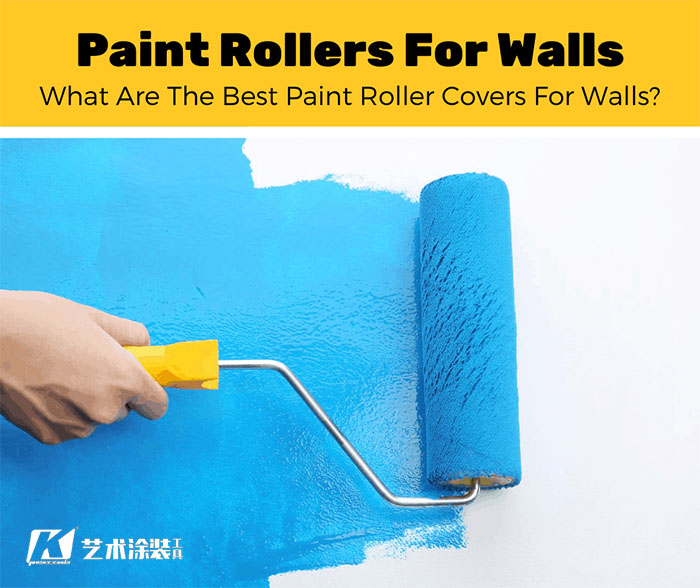
What we recommend is all painters: you should definitely use the same low-cost, high-quality painting rollers and roller covers that your use. Our paint rollers are made with high-quality metal and plastic and they do not bend when you push them into the wall. For painting walls, ceilings, trim (we use a brush to tip out the trim paint), and this is our main tool for exterior painting as well (again we use a brush to force the paint into all the little grooves). This is the best roller for any roller application, and you will not be frustrated and dread the next time you have to paint!
The best paint roller: what us professionals use, at a reasonable cost
The best paint roller 2021is the K brand high-quality & durable paint roller fabric 2047and is made by 1 fine companies: G.SB Paint Tools Co., Ltd. These Paint Roller Is Lightweight and Easy to Use Both Professional and Amateur Users, Ideal for DIY Tools; Easy to Clean; And Reuse; Durable and Long-Lasting; Designed for Use with All Paints.
Used to paint your closet walls and ceiling with the closet shelves attached. Was very easy to use and was quite manageable around attachments. The roller on rare occasions left behind a fiber that was easily removed using tweezers. There are better rollers in this size if desired. Coverage was good since the paint was covering eggshell white. Recommend you do not try to stretch the coverage, let the paint stay a little thicker. Clean up was excellent.
Hexagonal shaft prevents bending, and the outer grip is a pleasure to hold. Cleaned very well. Used a scotch pad to remove any stuck-on paint. Two suggestions: 1: line the paint tray with plastic wrap, makes cleaning much easier. 2: Wrap brushes in plastic wrap or tin foil if taking a break or continuing the next day. This keeps the paint wet and helps save time cleaning twice.
Some people like use roller pan? We don’t touch them, but we know you might prefer it. But if you do go with the pan, you are in good company, so do many pros. I cannot understand it. It’ so much more work! K brand Pack Paint Trays for Rollers, Deep Wells, Ribbed, Reusable with Some Paints (Plastic, Black).
2022 The Best Paint Roller Techniques and Useful Tips
Being to paint the interior of your home can be a fun project and it can also save you an abundance of money that would otherwise be spent paying painters to get the job done. But this home project can also present a myriad of challenges, especially if you don’t have much painting experience. Luckily, there are many tips, tricks, and techniques to follow to bring your painting a-game and make your house look better than ever.
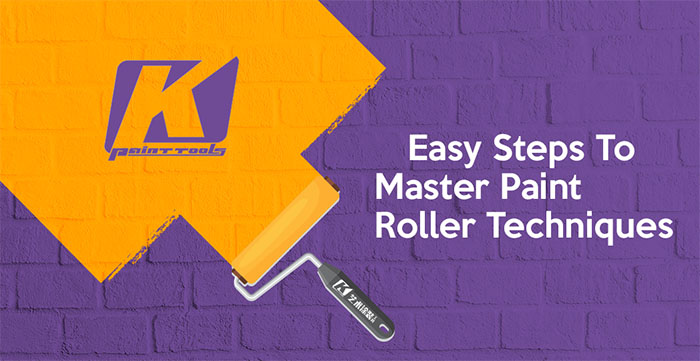
Remove Lint from New Roller Covers: lint on a roller cover could end up botching your paint job. Remove the lint from a new cover by using either painter’s tape or a vacuum. This will keep the paint clean and smooth as it goes onto the wall.
Painting in the proper sample makes a distinction in how convenient the method is and in how it ends up looking. As you roll paint onto the wall, do so in a "W" or "N" pattern, permitting you to coat the wall’s floor in large sections. Work alongside a moist aspect that’s been reduce in, getting as shut to the trim as feasible to keep away from leaving a ribbon of brush marks round the perimeter of the wall.
Applying the proper quantity of stress when portray makes a large distinction in how remarkable it will seem as soon as you finish. Moderate stress has to be applied. This is due to the fact the usage of too a whole lot strain should purpose a “Bead” or “Rope” alongside the side of the paint job, whilst a whole lack of stress will truly make your arm tired. As you quit each stroke, gently elevate the curler away from the wall to keep away from growing an area that is too distinct.
Working in small sections of a wall makes painting with a roller easier and will increase the quality of your results. These sections should be two to three square feet at a time. As you painting, the roller should sound wet. When it begins to lose the crinkly and moist sound, it needs to be reloaded with paint. Using a paint roller doesn’t have to be an intimidating task, even if you’ve never done it before. These tips make painting like a pro easy and even fun.
At last, the roller should be held in a particular way to deliver the best results. Hold it in your dominant hand and stand with your feet shoulder width apart as you paint. The roller should be held directly in front of you, providing you with the appropriate level of control as you paint. If you’re using an extension pole, place your dominant hand towards the bottom for more control and your non-dominant hand in the middle to help with leverage and pressure.
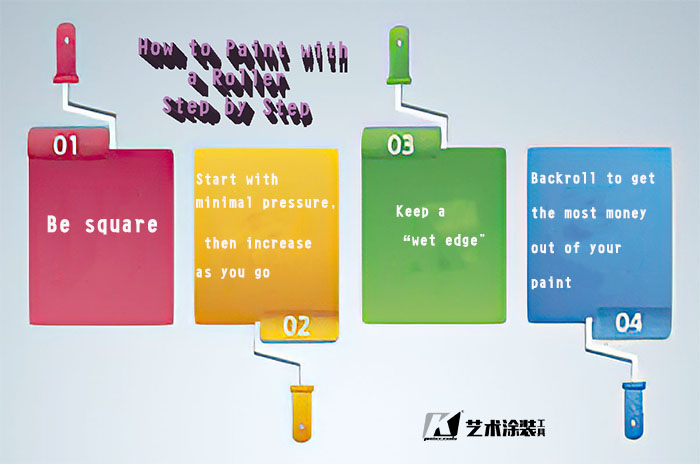
How to Paint with a Roller Step by Step and Efficiency Tips
1.Be square
You might have read that, long strips are best, but we roll in squares or rectangles: we make the square as big as we can with the most-paint we can soak up in the roller nap: hence the love of wool in our rollers. Within the rectangle, to get even coverage start with your diagonal or make a ‘W’, and then vertical strips back across it.
2.Start with minimal pressure, then increase as you go
Push harder and harder as your roller gets drier and drier. You will leave a build-up of paint at the edges: that’s ok for now: the clock is ticking, so don’t try to make it perfect yet. Distribute paint evenly, then go back and lightly touch the entire rectangle for uniformity.
3.Keep a “wet edge"
This means that you start in a corner of the wall and make new squares heading in one direction trying to avoid letting the edge of your square get too dry: it’s a juggling act and very difficult at high altitude like Denver! But this keeps the look even with no ‘seams’ between rectangles.
4.Backroll to get the most money out of your paint
When you get a few rectangles done, you can go back and ‘Back-Roll’ drying squares before it is too dry. This spreads the drying paint again and results in better coverage. It also removes the last paint streaks (overlaps), but remember that it must be timed just right in the drying process: experiment and you’ll get it quickly. Actually, you can use less pressure on one end of the roller to feather the edges so you don’t have a ‘seam’ in the first place.
5.Repeat the above steps
Don’t start 2nd coating until 1st coat is bone dry. Have a beer while you watch paint dry!

Roller Painting Tips – Painting Rolling
How to paint with a roller in the corners:
Smoosh paint into corners! By turning your roller cover sideways, drag a foot or 2, then rotate 1/3 turn, and smoosh again: no brushing there! With a longer nap roller, you don’t need to turn it sideways: just get close enough to fill the corner.
Professional’s secret how to use a paint roller: roll before brushing
I explained how much faster this is in another post on how best to paint a wall and you can see me doing it here.
Don’t use tape: tape is for tight spots only
Minimize the brushwork later on by rolling as close as you can to the surfaces you are not painting such as door trim. When if you will paint that trim later, smoosh into the corner and wipe trim with a rag so it does not build up goopy dry paint: no cutting here later.
Don’t dunk the roller
The paint on the plastic ends of the roller has nowhere to go but down: onto your floor or wall: unseen, and will leave a big gob.
Using the 5-gallon bucket or the paint pan (as we have described in a recent post), don’t overfill. Pros might put 3 gallons in a 5-gallon bucket. Homeowners might put 1 gallon in a 2-gallon pan. This is important. Don’t use even the best roller covers without a pole: you’ll hurt your wrist tendons.
Keep bucket/pan covered with a wet cloth when you take a break: paint dries on at the source and chips off into your paint: this ends up on the wall as a lump. Easy to prevent this! Shame to see the best paint roller cover die needlessly!
Don’t buy more than you need: this cover storage box: we just use plastic grocery bags with a little water. For oil-based rollers we are not ready to throw away, we wrap tightly and put in the freezer. It really works. To focus on that cold beer after.
How to Calculate the Cost to Paint a Room
According to some home improvement research institutes, the cost to paint a room that measures 10 by 12 feet can range from $200 to $800. When estimating the overall cost, professional painters find the coverage area to determine how many gallons of paint are needed.
To do this, follow these steps:
1: Find the area of the walls. Add the length of each wall for the perimeter. For a 10-by- 12-foot room, add the four wall lengths: 10 + 12 + 10 + 12 = 44 feet
2: Calculate the wall area. Multiply the area of the walls by the height of the room: 44 × 8 = 352 square feet
3: Subtract for windows and doors to get the coverage area. Use the same width by length method and subtract that number from the wall area; in this case, 21 square feet for one door and 16 square feet for one window: 352 – 21 – 16 = 315 square feet
4: Are ceilings, trim, and baseboards part of the project? If so, add these using the same method for finding the area. Calculate the cost to hire a painter. Painters charge $1.50 to $4 per square feet of coverage area: 315 x $1.50 = 472.50 or 315 x $4 = $1,260
5: Calculate how much paint you need. One gallon of paint tends to cover up to 400 square feet. Professionals recommend using two coats of paint and buying more than you need: (315 / 400) × 2 = 1.6 gallons
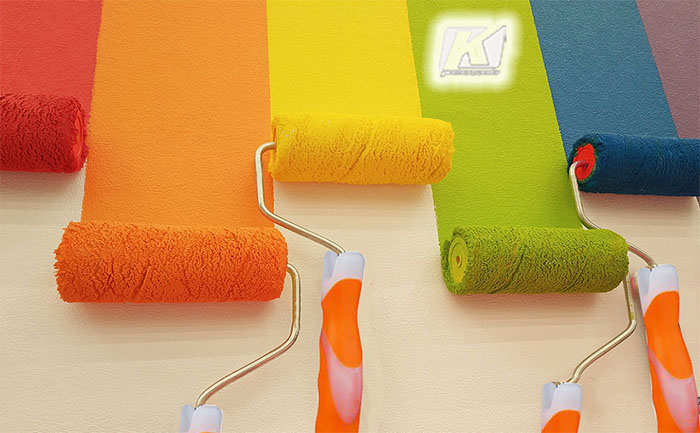
Factors in Calculating the Cost to Paint a Room:
The factors that go into calculating the cost to paint a room include the size of the room, wall height, trim, baseboards, ceilings, room type, geographic location, paint type, paint color, and paint finish. The average cost to paint a room can range from $955 to $2,890 with the national average at $1,892. There are many options available when choosing how to paint a room. Being aware of the differences can help keep your budget on track.
Size of the Room:
The cost to paint an average 10-by-12-foot room ranges from $200 to $800. The most important factor is area, and the size of the room determines the overall cost of the supplies. So how much does a gallon of paint cover? One gallon of paint covers approximately 400 square feet, and it’s recommended that each room gets two coats of paint. To receive accurate quotes from professional painters, you may want to have the room measurements handy when you contact them.
Wall Height:
Walls taller than 10 feet can significantly increase the cost per square foot since higher walls increase the paintable area. Adding additional square footage will boost the overall cost to paint a room.
Trim, Baseboards, and Ceilings:
The average cost to paint a house interior ranges from $2 to $6 per square foot with an average of $3.30 per square foot. Painting woodwork and ceilings adds to the cost to paint a room.
Room Type:
Painting a bedroom costs roughly $300 to $750 for a standard 10-by-12-foot room. This size room will typically need 2 gallons of paint and a primer, if you decide to cover a darker wall. Bathrooms usually run between $150 and $350. A bathroom doesn’t have much area to paint due to tubs, cabinets, and showers. A larger master bathroom will cost more to paint.
The cost to paint a living room runs from $900 to $2,000 for an average 330-square-foot room. The overall cost will increase if there are high ceilings or you decide to add an accent wall with a different paint color. Kitchens usually cost up to 50 percent less than other rooms due to cabinets. Painting kitchen cabinets averages around $30 to $60 per linear foot, or close to $1,000.
Geographic Location:
Painters in different parts of the country have different rates. Expect to pay more in areas with a higher cost of living. The best way to find out how much a professional will charge is to search for “painters near me” and compare rates.
Paint Type:
Paint will cost anywhere from $20 to $100 per gallon, but keep in mind that a professional can buy paint for up to 50 percent less than a homeowner. The average cost to paint a house can range from $1,000 to $11,000. Prices will vary depending on what type of paint, primer, or level of gloss you choose.
Paint Choice and Color:
The average home needs approximately 6 gallons of paint per coat. At two coats, the cost difference can skyrocket if you choose a more expensive paint. The average price of a gallon of paint can range from $20 to $100 or more per gallon, depending on the brand. At two coats per room, the cost difference to use a designer brand of paint could add up to $1,000 or more. Deciding to have each room be a different color will also cost more. Having the same color in multiple rooms will help save money.
Paint Gloss or Finish:
Different gloss levels have different prices. The glossier the paint, the higher the price will be. Actual pricing differs from brand to brand, and paint comes in a few standard finishes:
Flat or matte: This type of paint is best for rooms with lower levels of humidity. Flat or matte paint is not as easy to clean as other finishes, but it doesn’t reflect light.
Eggshell or satin: This paint is well suited for all rooms, even high-traffic areas. It’s easy to clean, and many people will use this for children’s rooms.
Semi-gloss: Semi-gloss paint is stain-resistant, easy to clean, and works well in kitchens and bathrooms.
High-gloss: High-gloss paint is typically used for doors and cabinets. It’s extremely durable and easy to clean.
Additional Costs and Considerations:
When budgeting for the cost of painting a room, there are usually additional price factors and considerations. Labor costs can run from $170 to $680 and can vary due to how labor is estimated: by the square foot of coverage area at $2 to $6 per square foot for labor and materials, or for labor alone at around $1.50 to $4 per square foot.
Labor can also be charged by the square foot of floor space at around $5 to $10, and some professionals charge by the hour at around $20 to $50 an hour to upward of $75 per hour. Additional costs can include supplies, moving furniture, wall preparation, repairs, customization, the addition of wall textures or accents, testing for lead or asbestos, and cleanup.
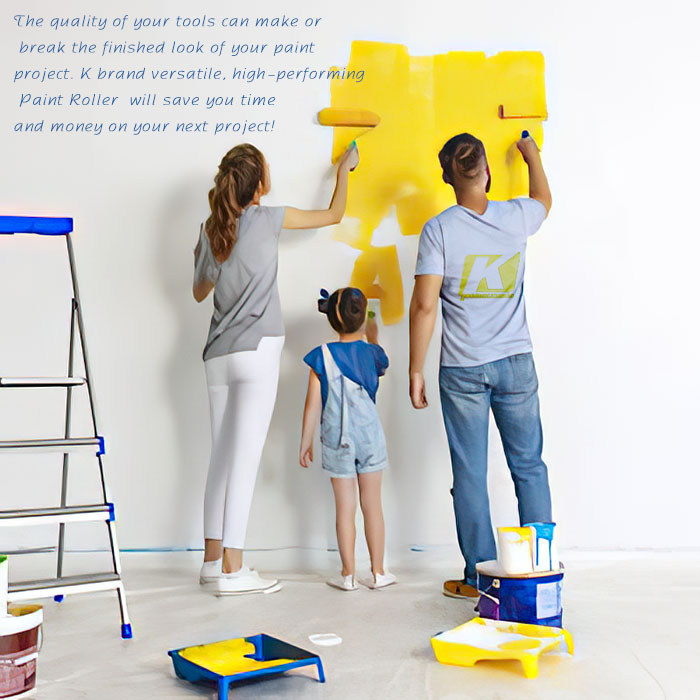
Cost to Paint a Room: Types of Paint.
Interior paints are usually classified in two ways: oil-based paint or latex-based. Here are some qualities of each type.
1. Oil-Based Paint: Oil-based paint is more durable than latex paint, even though it takes longer to dry. It goes on smoothly and provides better coverage with just one coat. Many people like oil-based paint because it has superior adhesion and good stain resistance. Oil-based paint works well on walls, woodwork, trim, doors, and windows, even though it’s not very resistant to fading and chalking when exposed to direct sunlight. Keep in mind that mineral spirits are needed for cleanup, and special procedures are needed for disposal.
2. Latex-Based Paint: Latex-based paint provides a long-lasting finish and gloss retention. It’s easy to use, it dries quickly, and it resists chalking, fading, and yellowing due to sun exposure. Compared to oil-based paint, it has fewer fumes and can be easily cleaned up with soap and water. If you’re interested in using latex paint to cover up a surface that was previously painted with oil-based paint, it can be a bit difficult for it to adhere. Latex paint is also absorbed into wood surfaces, causing the wood to swell and requiring sanding between coats.















